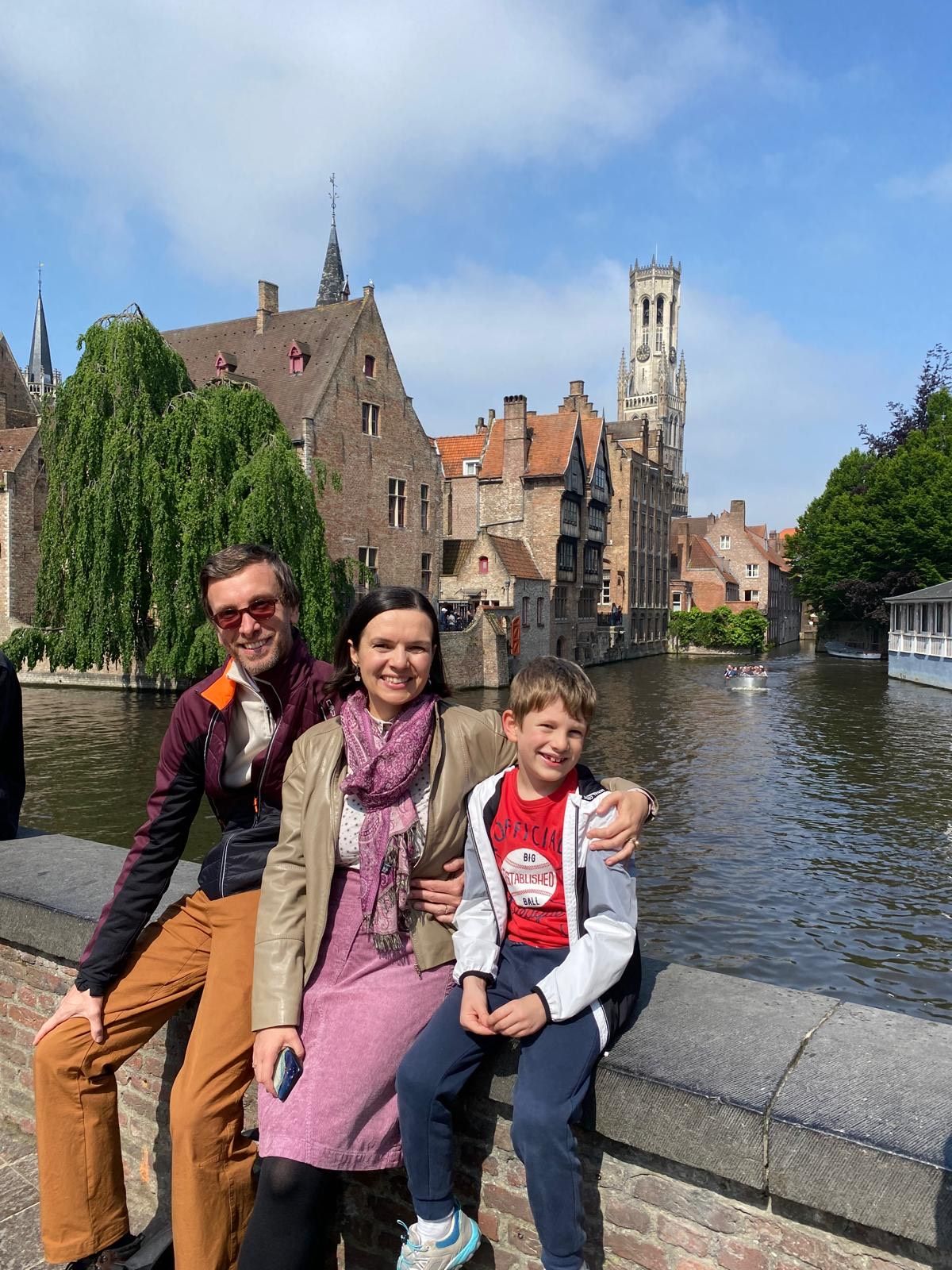In Bruges
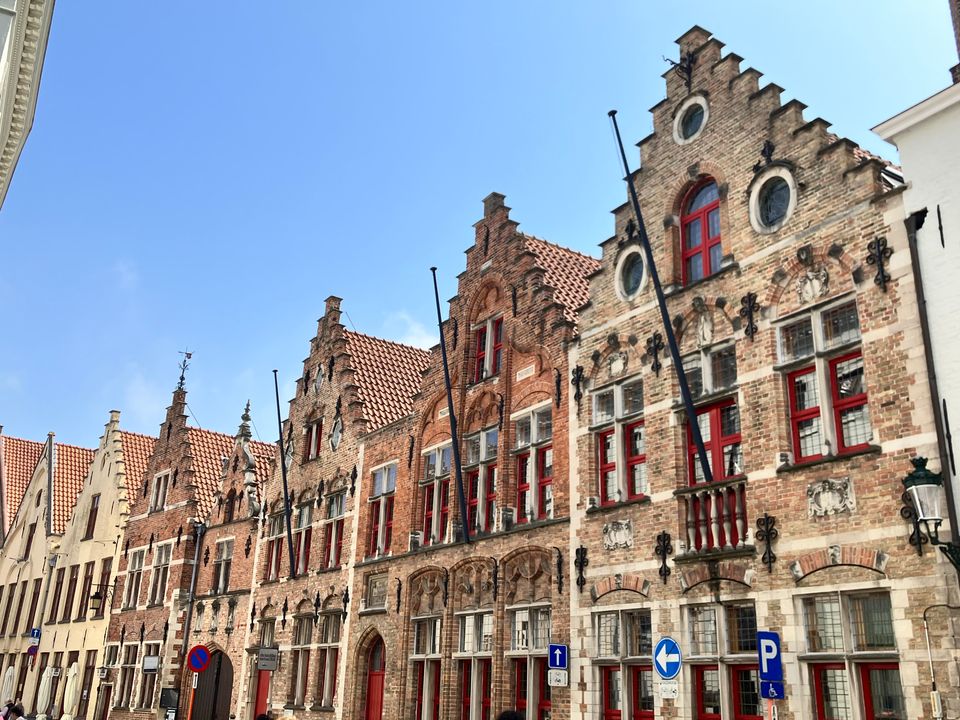
Bruges, an enchanting small city in Belgium, holds a special place in my sentimental history because that is the place where I met my husband. How lucky I was to have the beginning of a love story in that sleepy, peculiar, hopelessly old-fashioned, romantic, utterly beautiful place! If you walk across a stone bridge, swerve to the right, and then left, there is a row of typical Belgian houses, among which there is one that still displays our family name on the bell. We search for it every time we visit Bruges, compelled to come as if on a pilgrimage. There is an attic window, a memory of a fairy tale weekend that changed our lives, and the sanctity of the first meaningful kiss in my life. And they lived happily ever after. Therefore, everything that follows is the most subjective, most lovestruck perspective on a city that I have ever had.
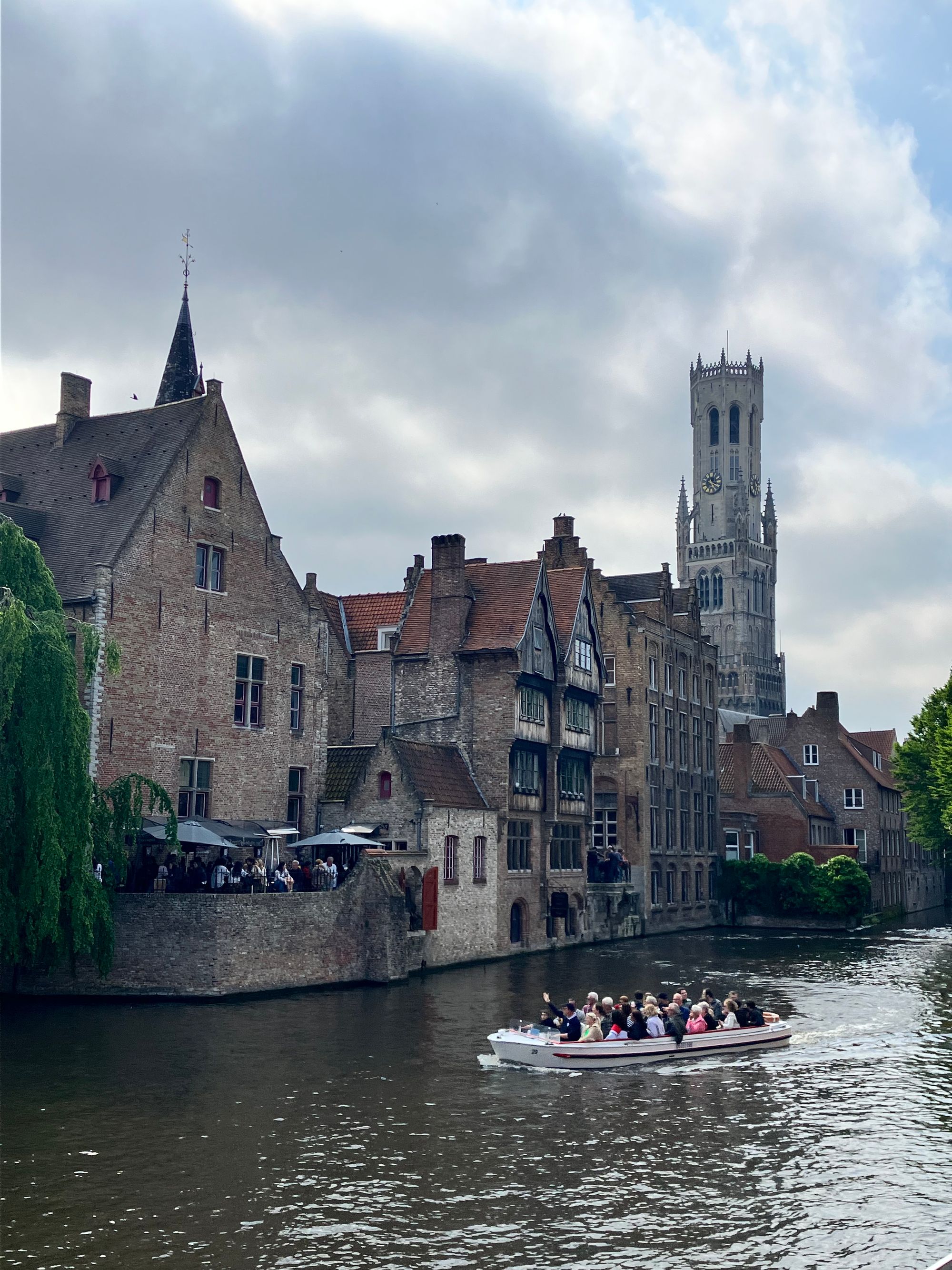
But what about all the other tourists that keep on coming there, the relentless crowds that flock to Bruges, walking behind the inevitable guide with a raised umbrella, or sitting tightly packed in the boats that navigate the narrow, yet expansive network of canals? They can't all have the same excuse as me. Or at least, not with my husband. The vans that offer French fries (or Belgian fries, please) on the main square are an iconic institution, with a heavy dollop of mayonnaise to make it more authentic. The Flemish rabbit stew and racks of spare ribs, with, you guessed it, more fries aside, are as delicious as they get. Beer from the local breweries should be absolutely divine. But that can't be enough, surely.
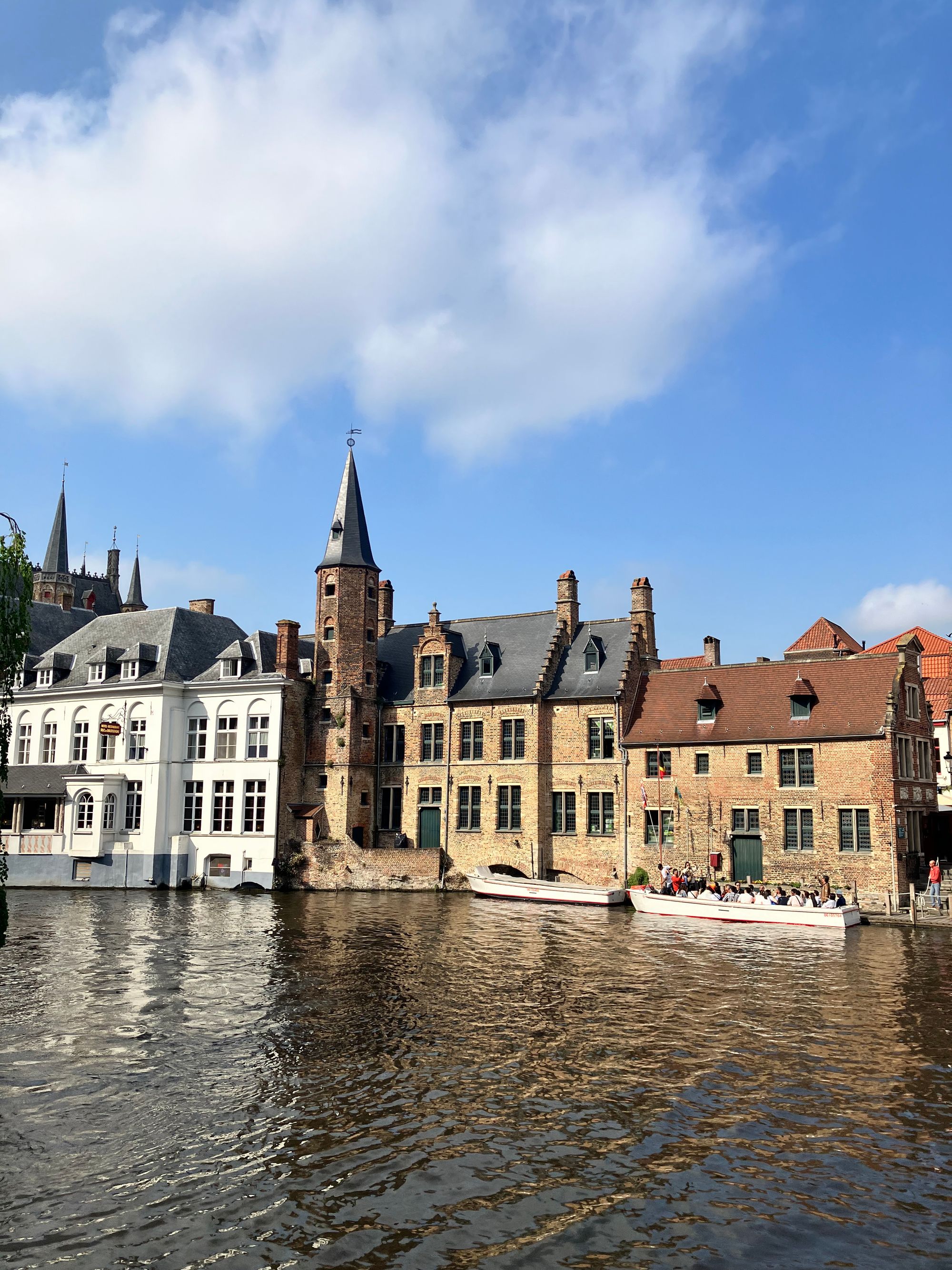
In fact, there is irrefutable magic, romance, and mystery in Bruges, and you feel like you are inside a painting while being there. One of those priceless, detailed masterpieces of Flemish old masters. You are a milkmaid, a girl reading a letter, the lace maker, the astronomer, forever caught in the background furnished with rich tapestries or tiled with Delft blue and white. You are wearing a silk turban, dressed in heavily embroidered textiles that arrived on the ships of Dutch merchants, you are surrounded with tulips or extravagant spices. You get the point, I trust. In Bruges, you feel immortalized, immersed in art, bohemian, and who wouldn't wish for a brief moment of that? Among others, the famous portrait painter Jan Van Eyck spent much of his life in Bruges, and his statue adorns a lovely square where we make a point of spending time and having a meal every time we come, carefully observed by the serious faces in reproductions of his portraits.
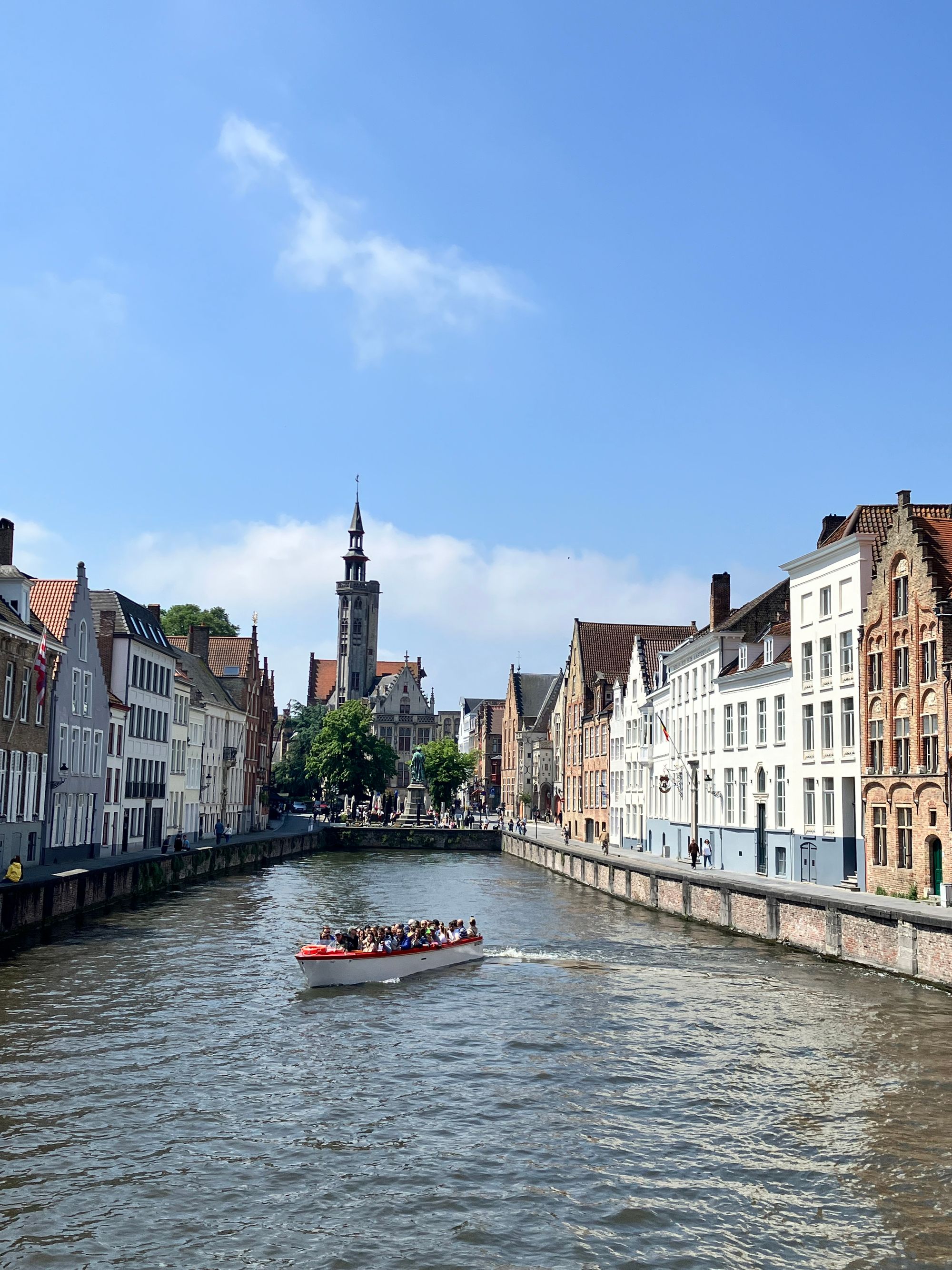
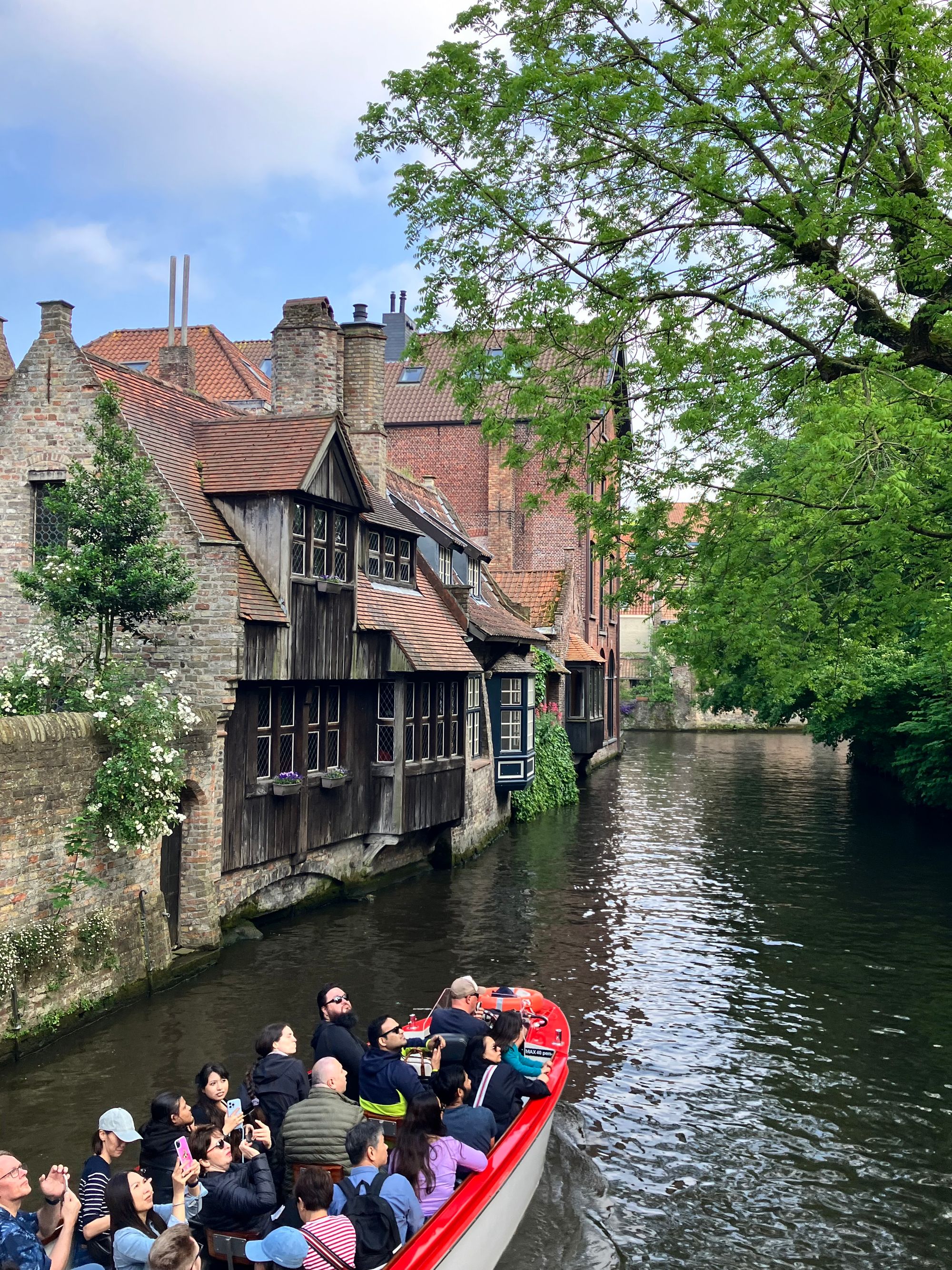
Oh, and then there are the houses dotted everywhere...you simply can't stop looking up, and why should you? They resemble the highly coveted KLM souvenir houses, all lovely, tiny, intricate in their own way, and unique. At the same time, they all share the recognizable beauty of being narrow, and tall and having quaint, crenelated roofs. Logically, if you don't know what KLM houses are, we can't be friends. But, yes, the lovers of architecture will be in heaven here.
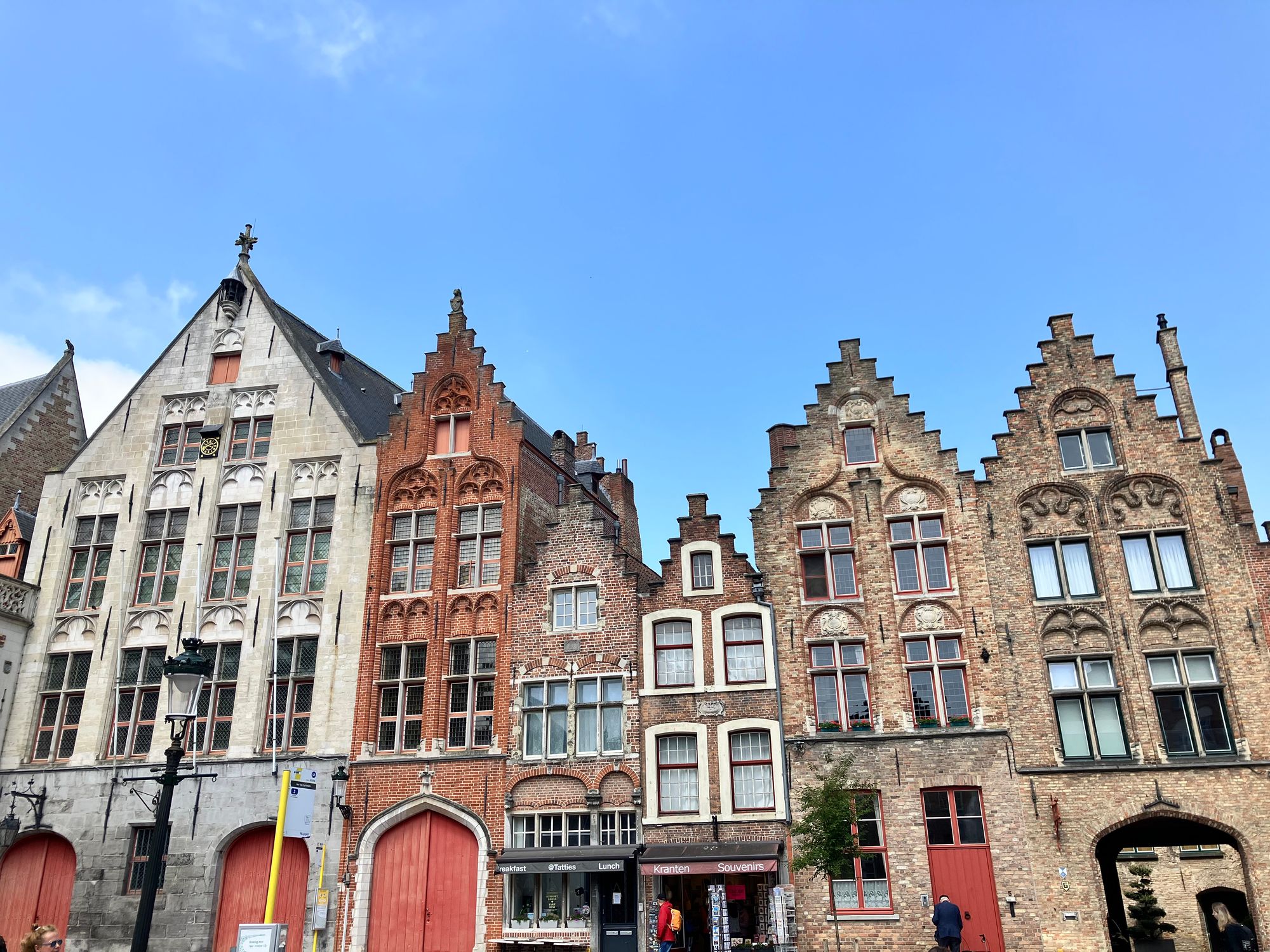
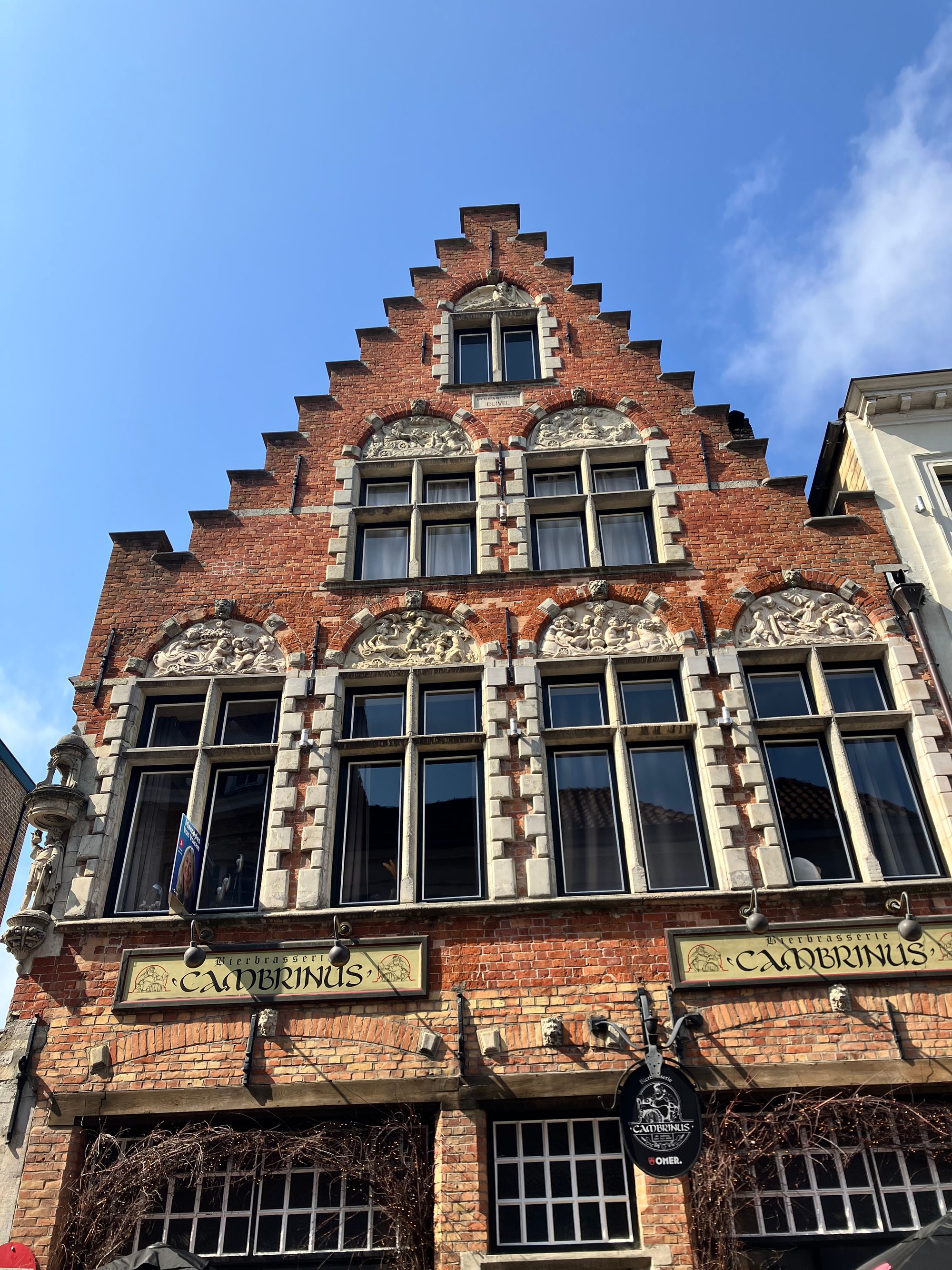
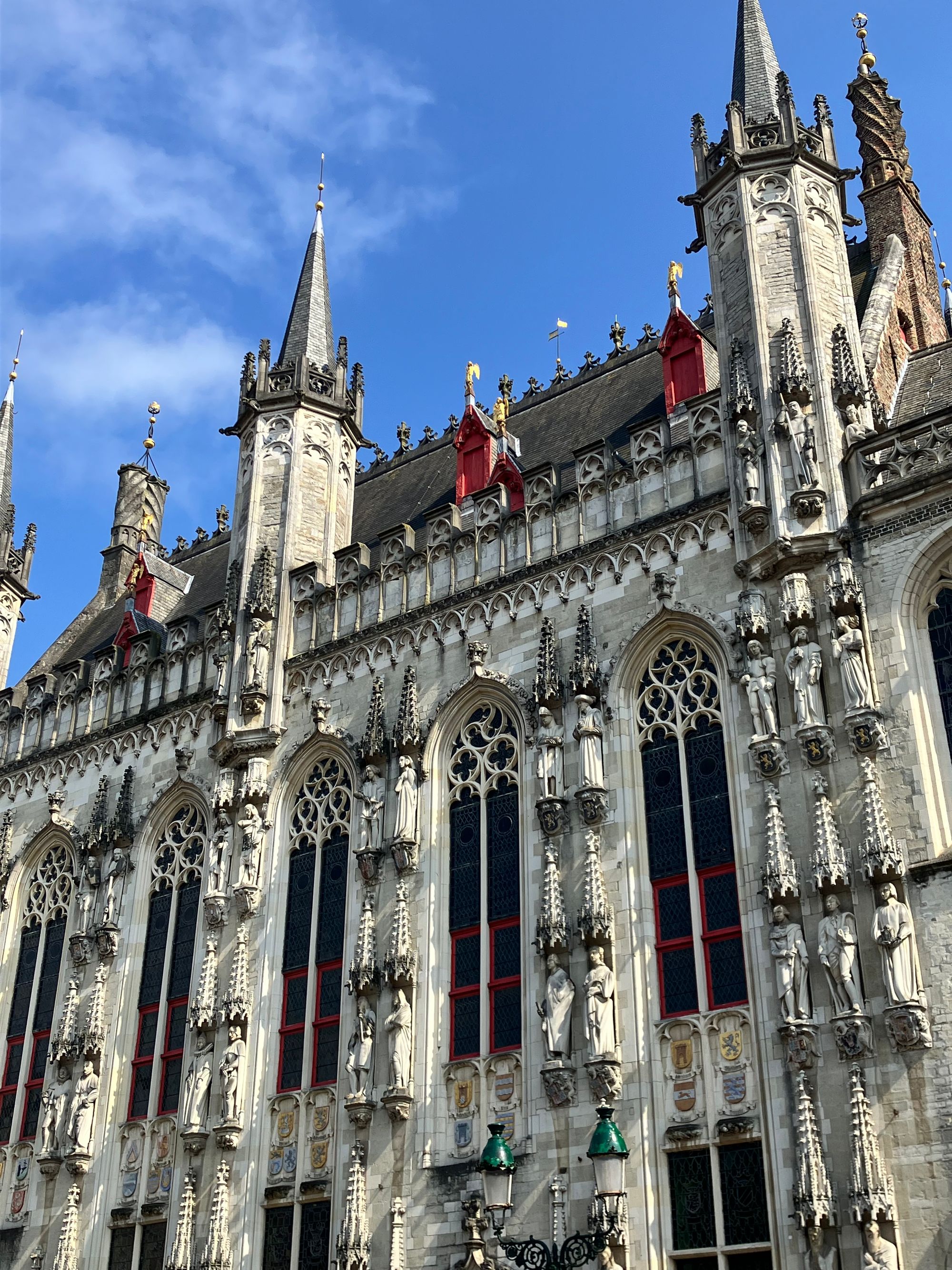
Seeing Bruges from the water seems to be an obligatory ritual since Bruges is called the Venice of the North. Water plays such an important role in the daily life of Bruges, and the city owes its creation to the favourable connection with the sea. Once it was a port of trading that attracted merchants from all over Europe to share in the economic boost of the city due to the Flemish cloth commerce. The world's very first stock exchange was also established in Bruges during the 15th century. Incredibly talented painters made Bruges their home, as did many other artists and craftsmen, noblemen, and distinguished families. Today, the first glimpse of the city is typically when you come from the suburbs towards the historical centre and have to cross one of the many canal bridges. It is a spectacle in itself because the bridges open up sideways many times a day to let the barges and boats in. Once inside the city, it would be hard to not be impressed by the timeless beauty of the overhanging willow trees, lush little gardens just above the waterline, elegant swans with their little chicks in tow, and old stone bridges crossing the water. Water, water, everywhere...luckily there is beer to drink.
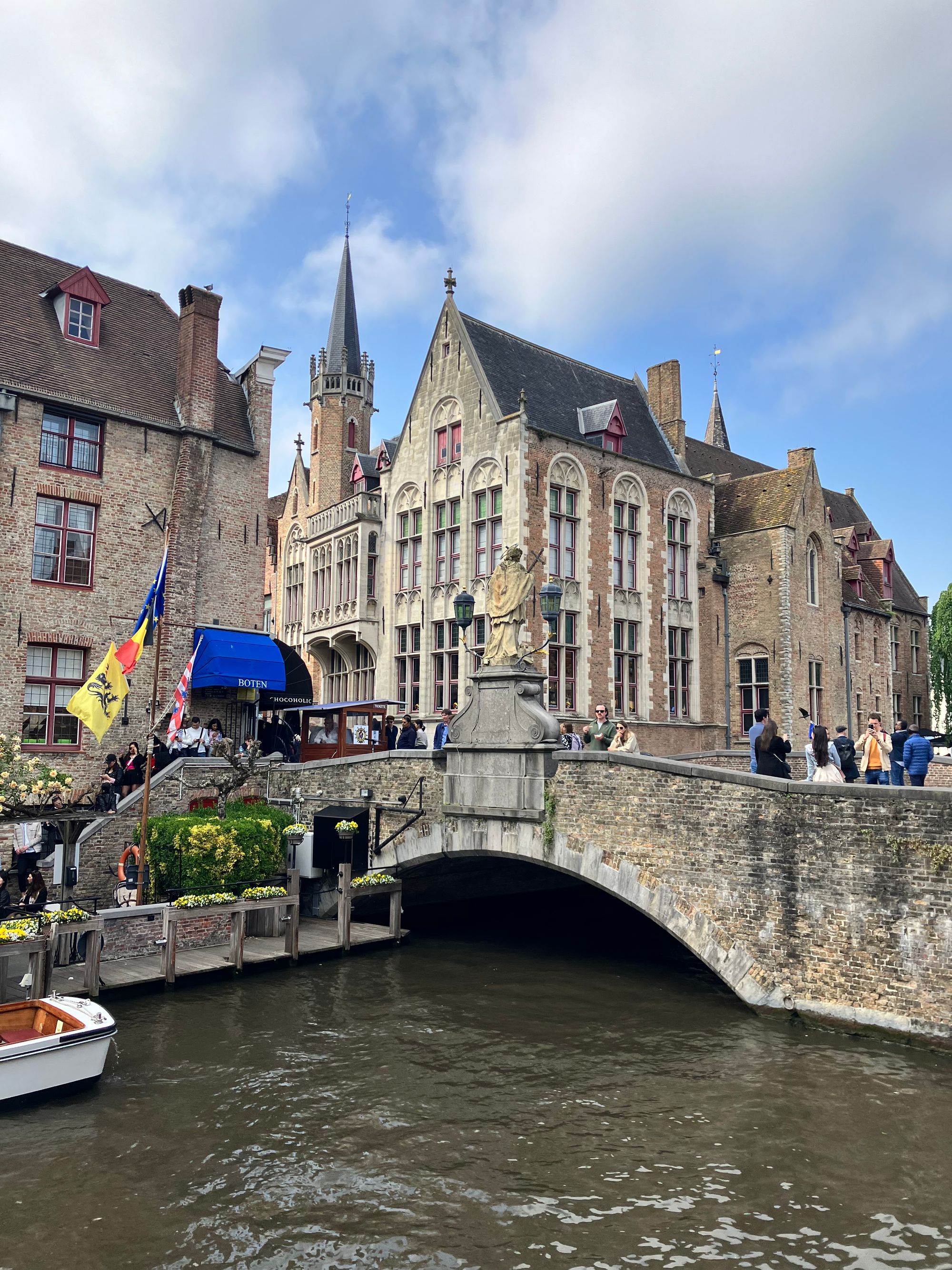
The mansions that have private access to canals are so lavish that they must have belonged to the wealthy merchant families of the past or the nobility. A peaceful public space, full of greenery, and picnicking families, is called a Minnewater Lake, or a Lake of Love and it completes the water retreat atmosphere of Bruges. Another market worth visiting is the fish market, a cobbled ancient market with stone slabs that display prawns, shrimps, mules, and all other sorts of northern seafood. Special points go to the experience of visiting the charming vintage market along the canal, under the trees. There you can bargain for trinkets and knicknacks, from toy Smurfs, naturally, to Wedgewood ceramics, and old coins.
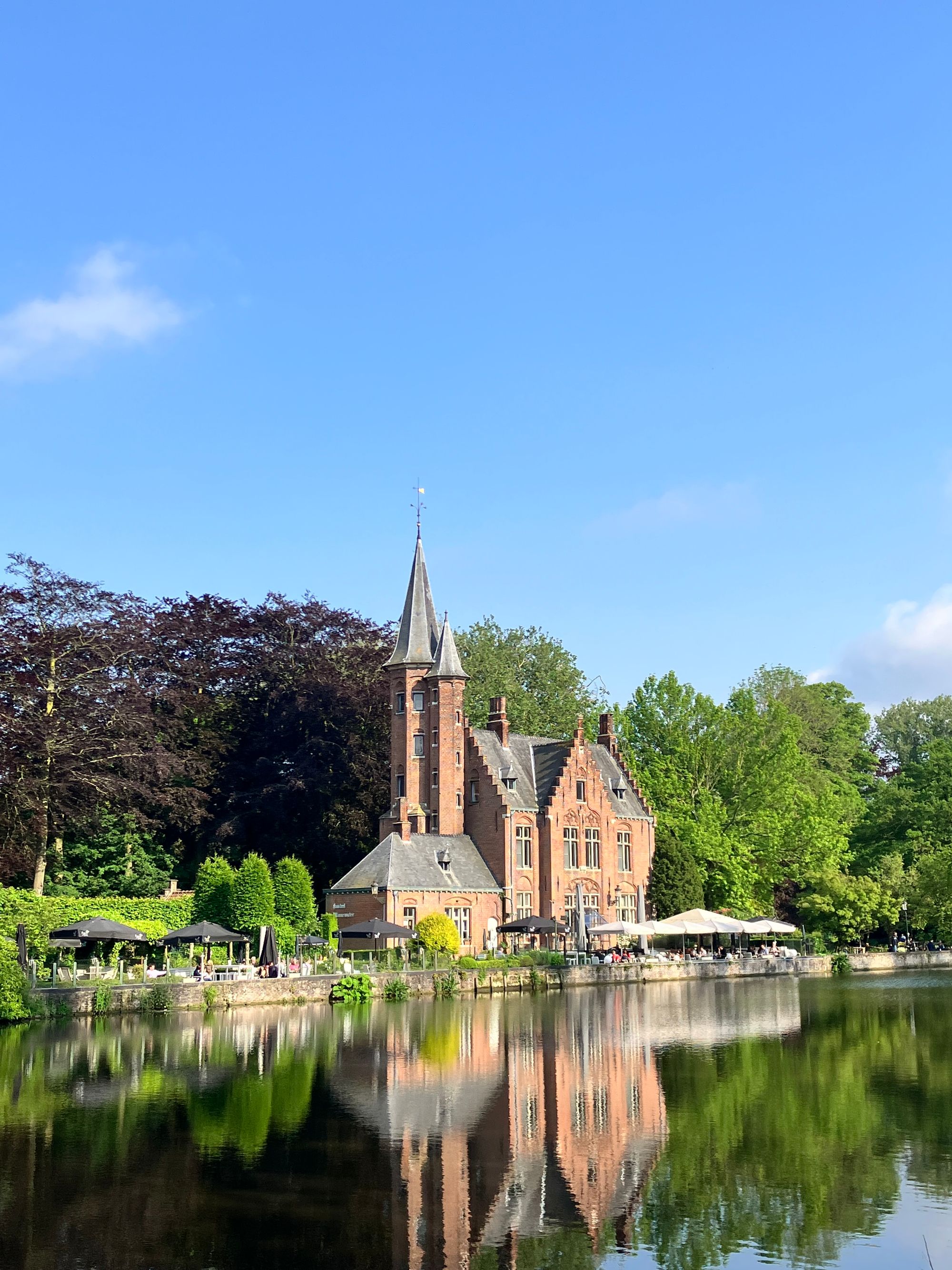
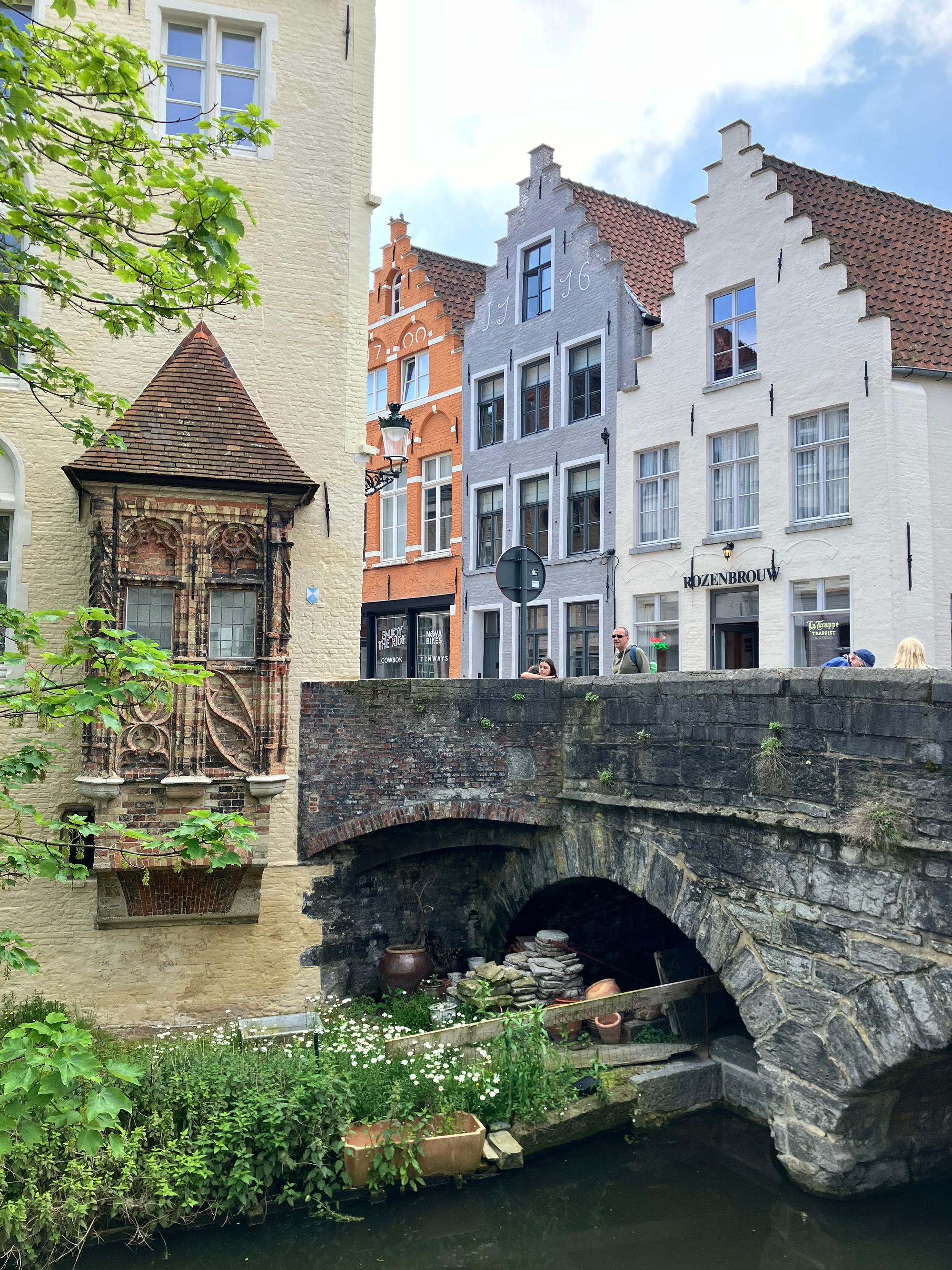
A place of peace and tranquility that always astounds me with its forward-thinking is the Beguinage. It is a cluster of tiny white houses that surround a courtyard which was once a retreat home for religious women, widows, spinsters, and dowagers, who would devote themselves to God but were not actual nuns. That must have been a safe house, a feminist commune of its time, where all the women went to shield themselves from male tutorage. Today this is an actual Benedictine convent for real nuns, a space of total zen, and it doesn't matter how quiet you are, someone will come to you to shush you even more. When that happens, you will know that you entered the Beguinage.
They say that Bruges is the best-preserved medieval city in Europe, and it certainly feels that way. Bruges, unlike many other European cities, was not destroyed during the Second World War. In awe of its authentic and historical medieval beauty, the German commander, Immo Hopman, refused to respect orders from his superiors to bomb the city. God bless you, Immo. Dostoyevsky said that beauty would save the world, and it certainly did save Bruges.
The main square is a picturesque enclosed marketplace with Gothic-spired buildings and guild houses keeping it in its tight embrace, intricately decorated and in such perfect shape that they could have been built yesterday. The townhouse hides on its second floor a most amazing ceiling, covered with stunning murals that are worth a visit. The 13th-century belfry that soars above it like a helicoptering parent is the most distinctive landmark of the city, together with the accompanying 47 bells. The embellished shops are beyond lovely, full of chocolate, waffles, lacework, craft beer, diamonds even. Our favorite shop is now closed due to the retirement of the owner, a statuesque Santa Claus character, with suspenders and all. It resembled a genuine Santa's workshop and it used to sell delicate toys, old-fashioned figurines made with wood, intricately painted by hand. I received a Tinkerbell fairy at the beginning of our courtship, and our son got a hot air balloon upon his birth. Once again, Bruges played a memorable sentimental role in our family's history.
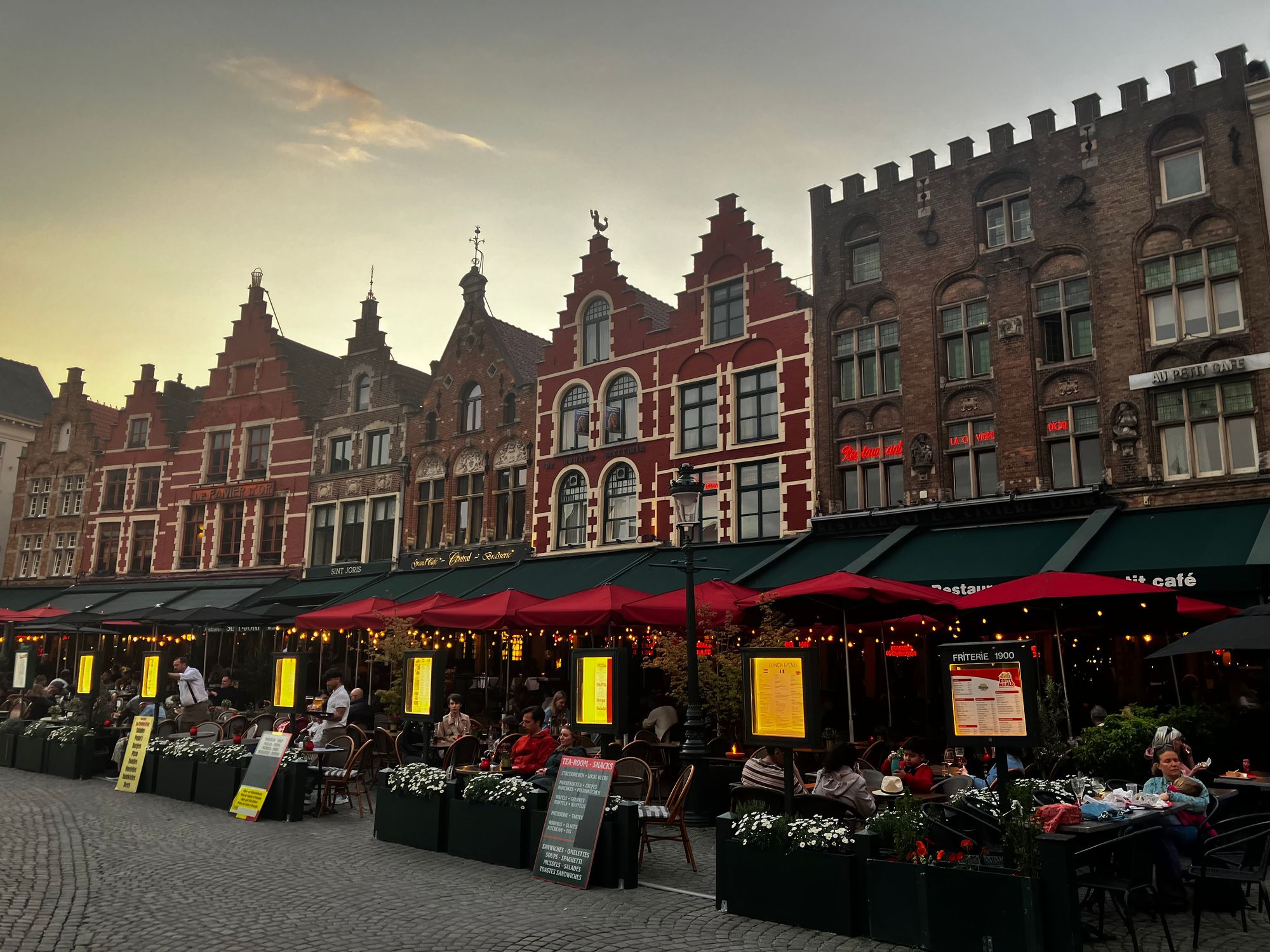
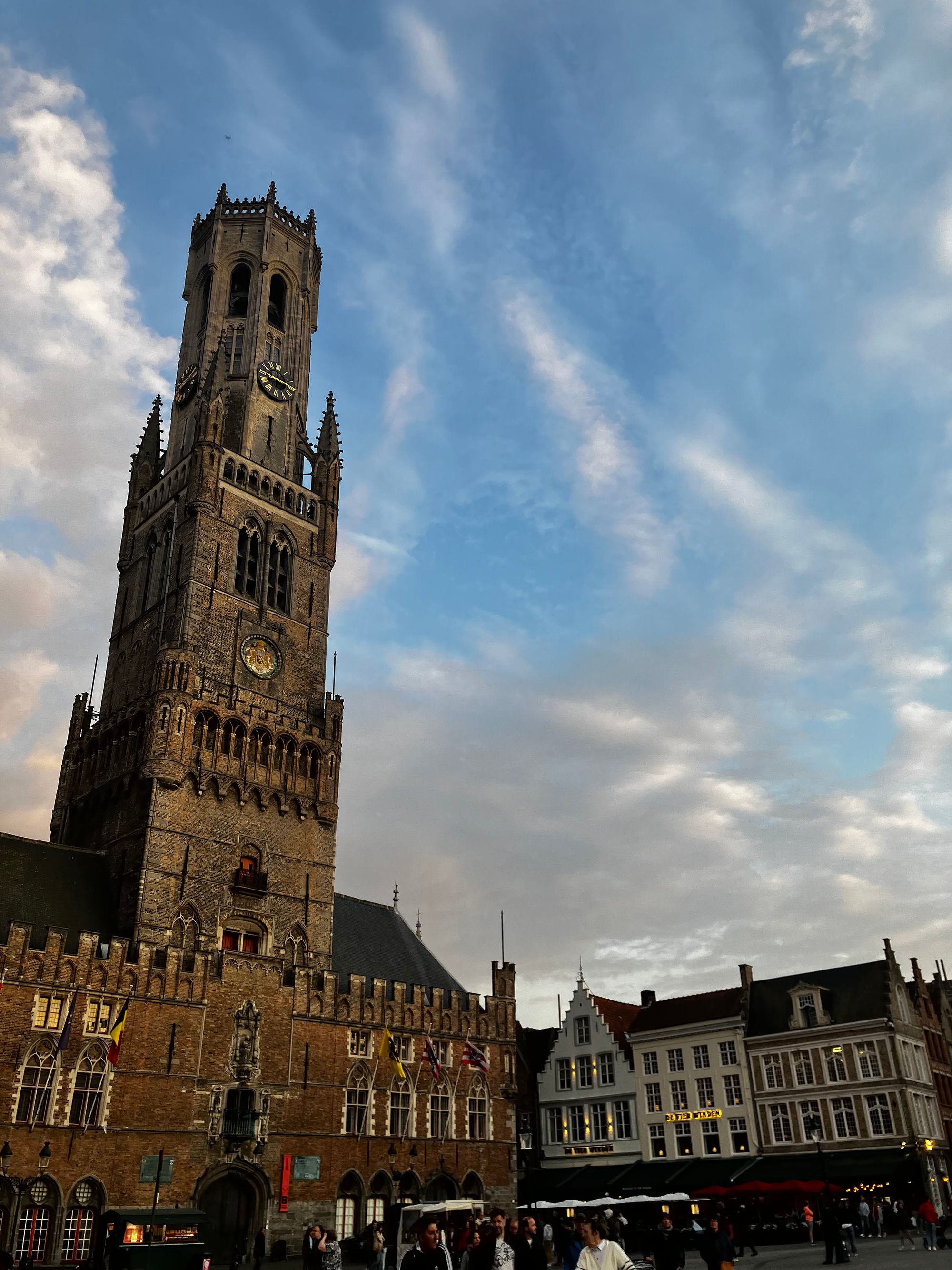
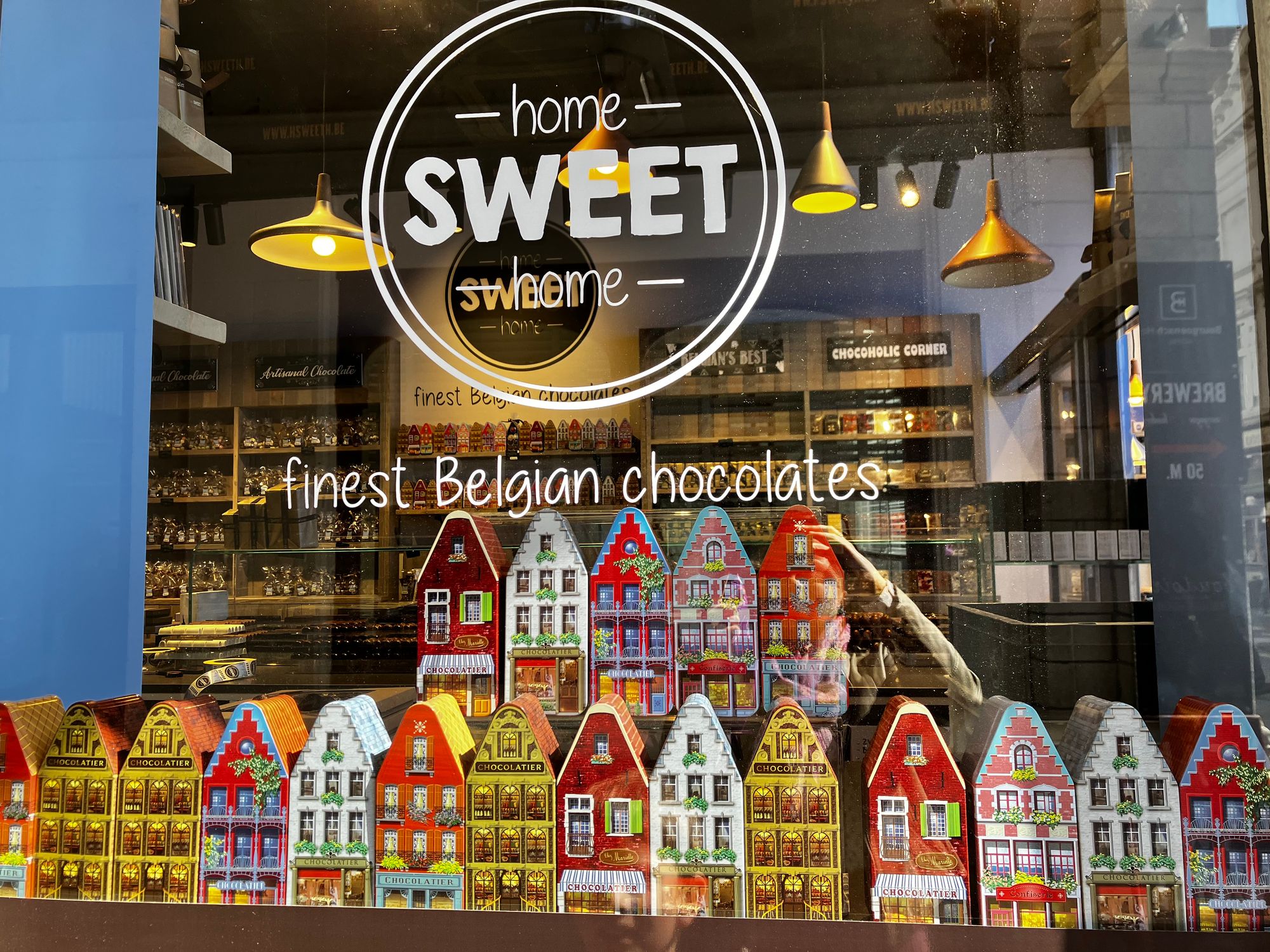
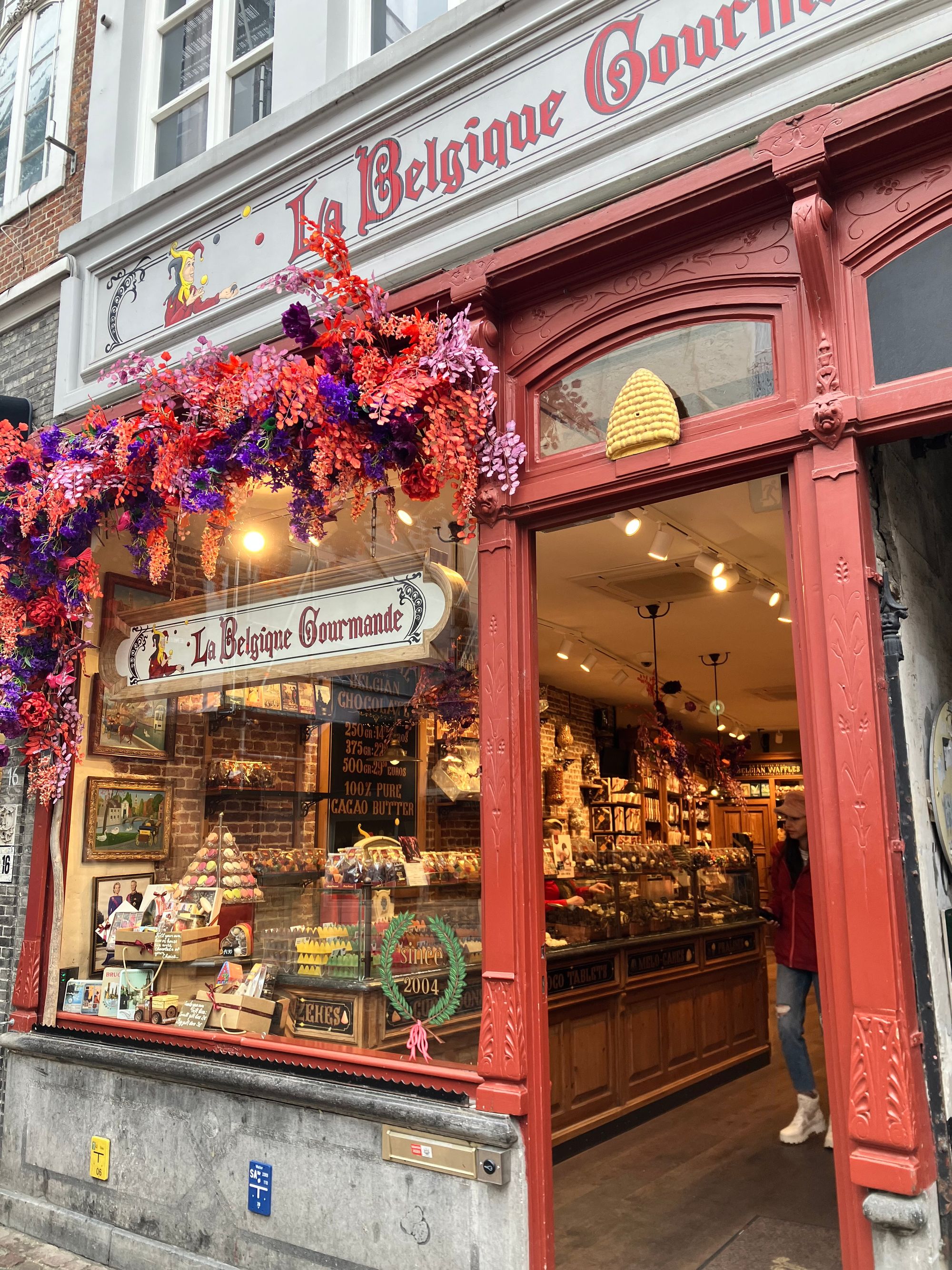
The Basilica of the Holy Blood is also a stand-out building, alive with colour and details, but the main reason for the large turnover of visitors is that it supposedly contains a vial of Christ's blood. Don't get me even started on the problematics of that. However, the macabre church of Jeruzalemkirk is the strangest in the city. It was built in the 15th century and was based upon the Holy Sepulchre in Jerusalem. The altar of the church is covered in skulls, then there is a copy of Christ's tomb, and also a tomb containing the heart of a patron nobleman which was supposedly brought all the way back from Scotland following his murder there. If you are not deterred by these unusual choices in interior decoration, you could admire the fine stained glass windows of the church, or its exterior, especially its tower, which is distinctly different from others in Belgium because of its oriental influences. In another church, there is the only Michelangelo sculpture outside of Italy, Madonna of Bruges, presumably tucked away somewhere in some dark corner, because there is so much to admire in here, that not even a Renaissance masterpiece causes a big stir.
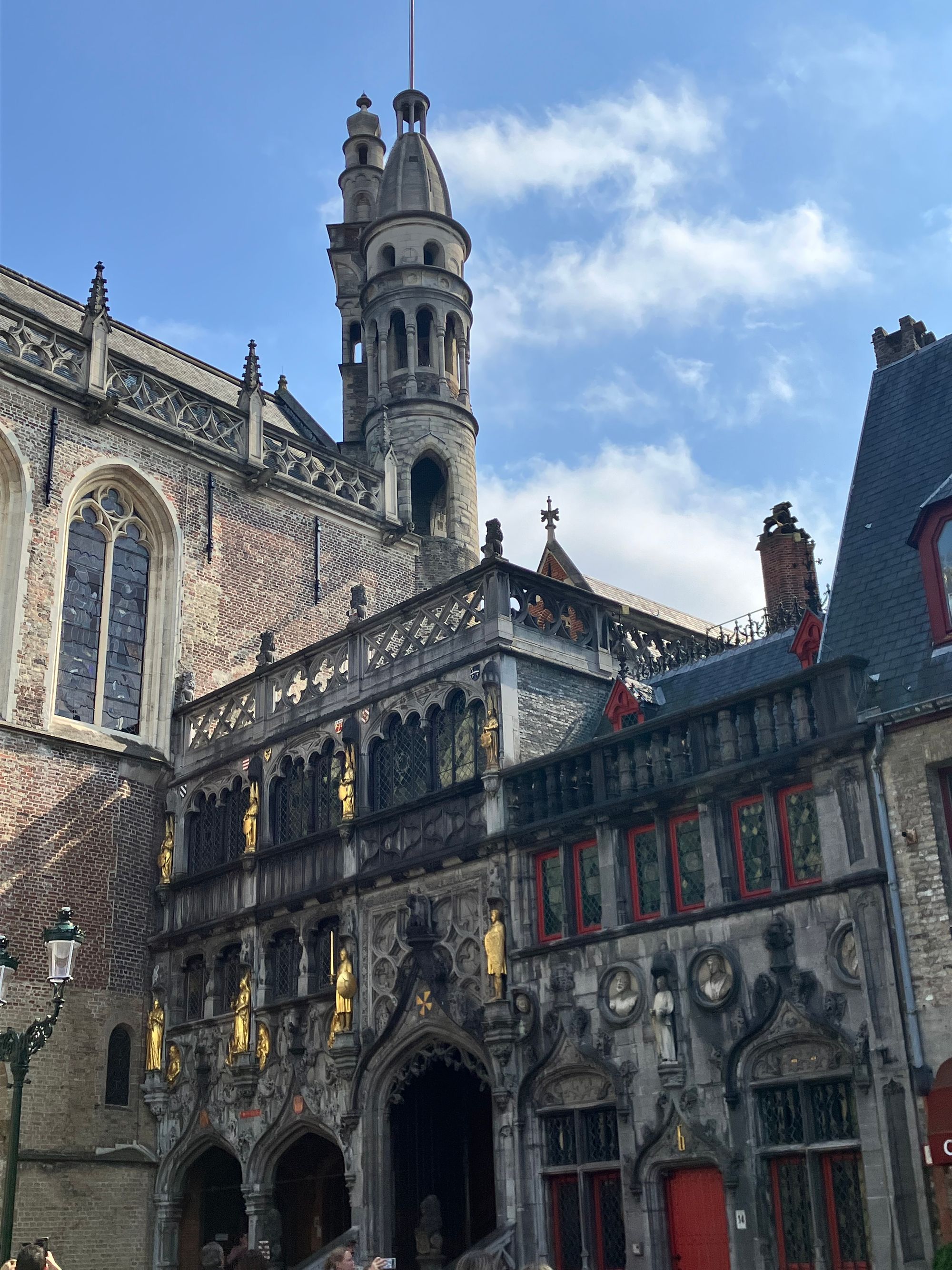
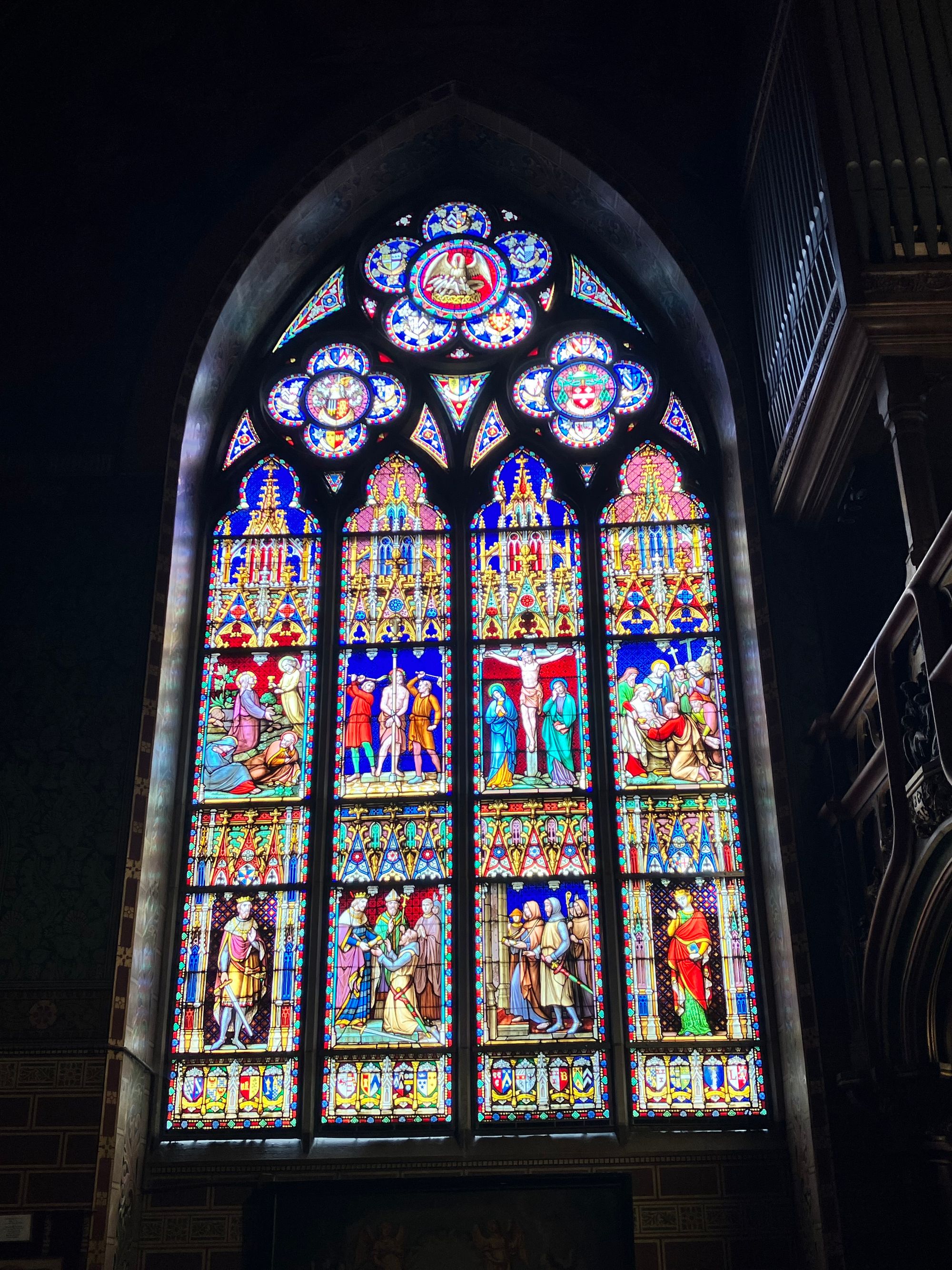
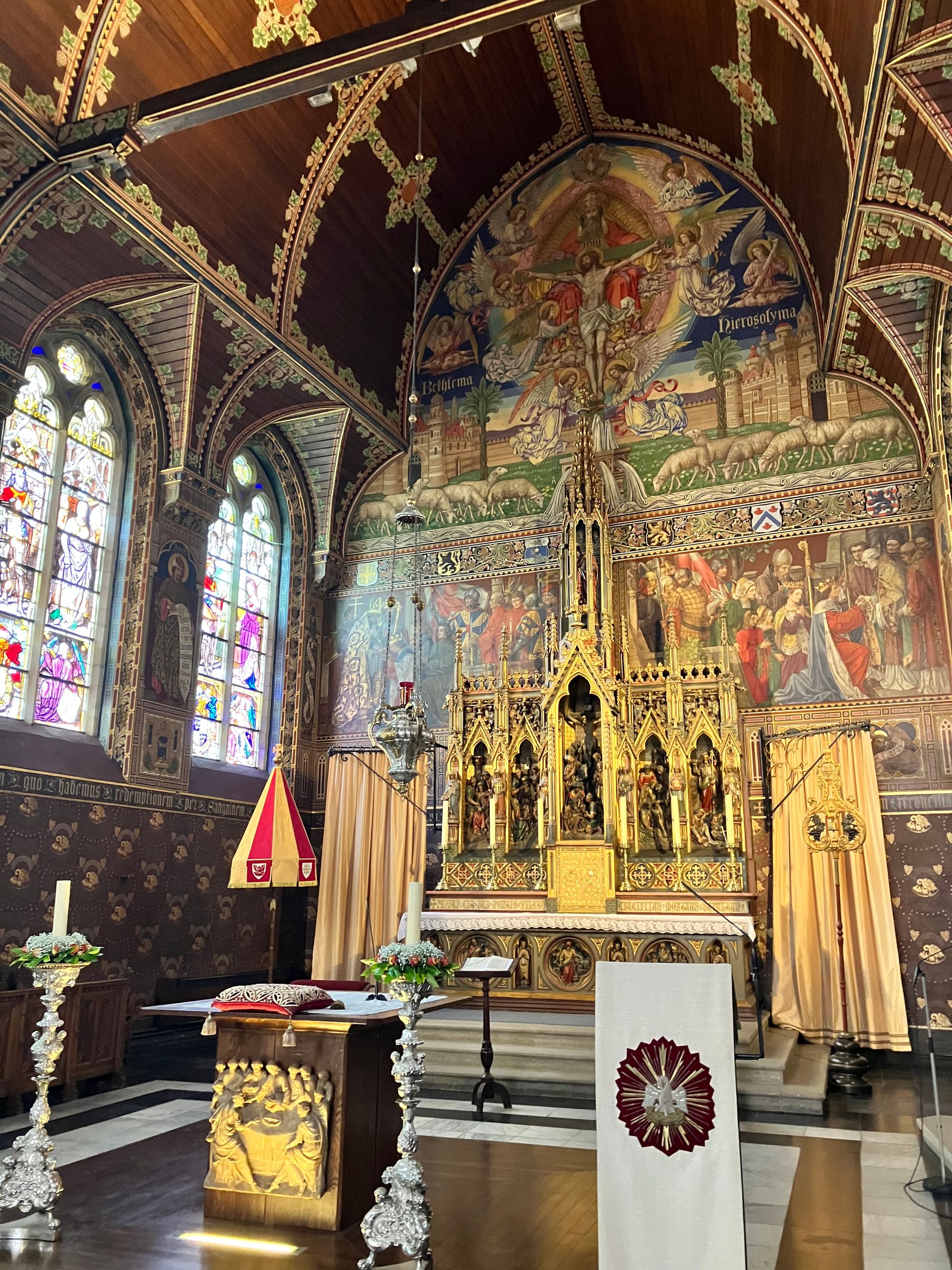
For all these reasons and more, Bruges is a UNESCO Heritage City, and one of the most agreeable, recognizable, photogenic, and charming cities in the world. I am sure that I wouldn't have loved my husband any less if I had met him in some insignificant, industrial, ugly place. Winning the lottery of finding the right person for yourself is more than enough. But still, we are lucky and proud, and grateful that every time we wish to reminisce or celebrate an anniversary, we get the chance to go to Bruges, because that is a very special city that leaves everyone intoxicated with love, beauty, and art. So, please, do ask me how we met.
